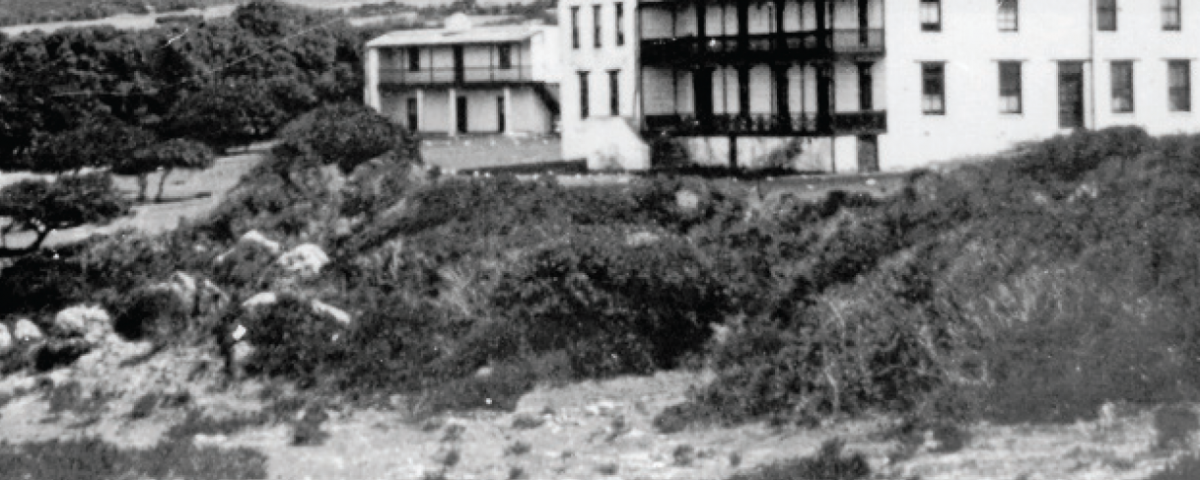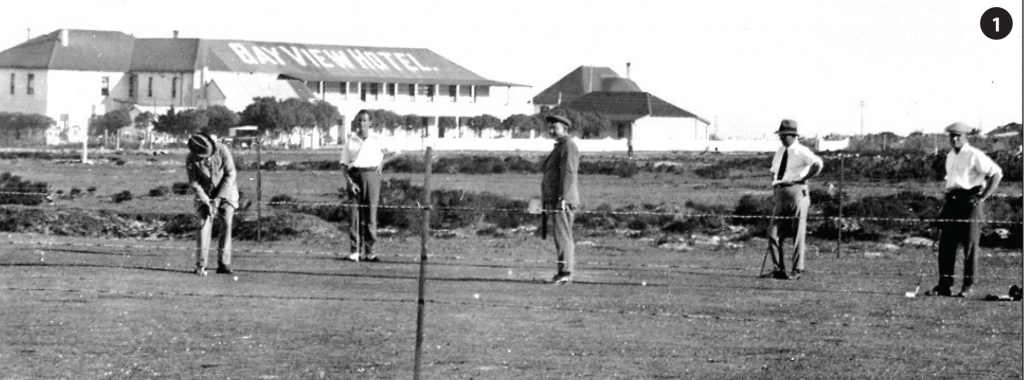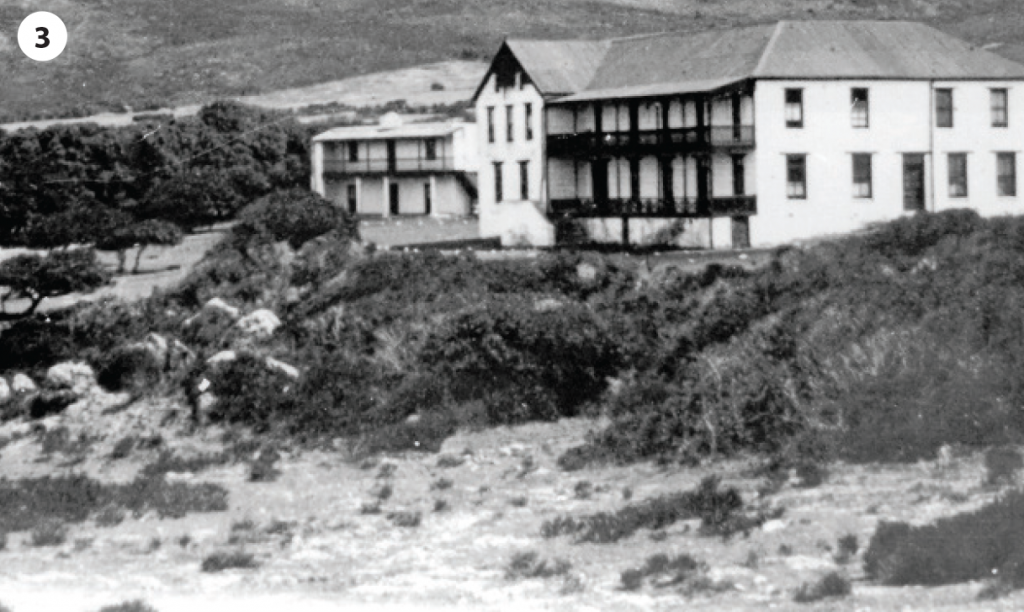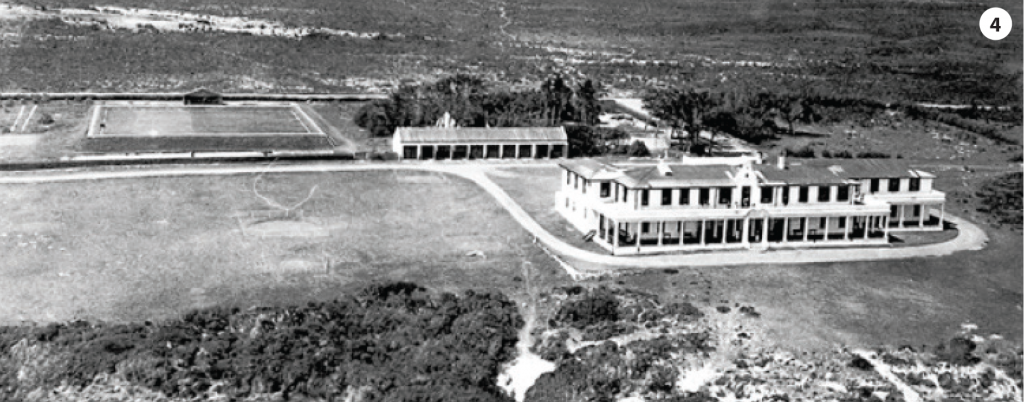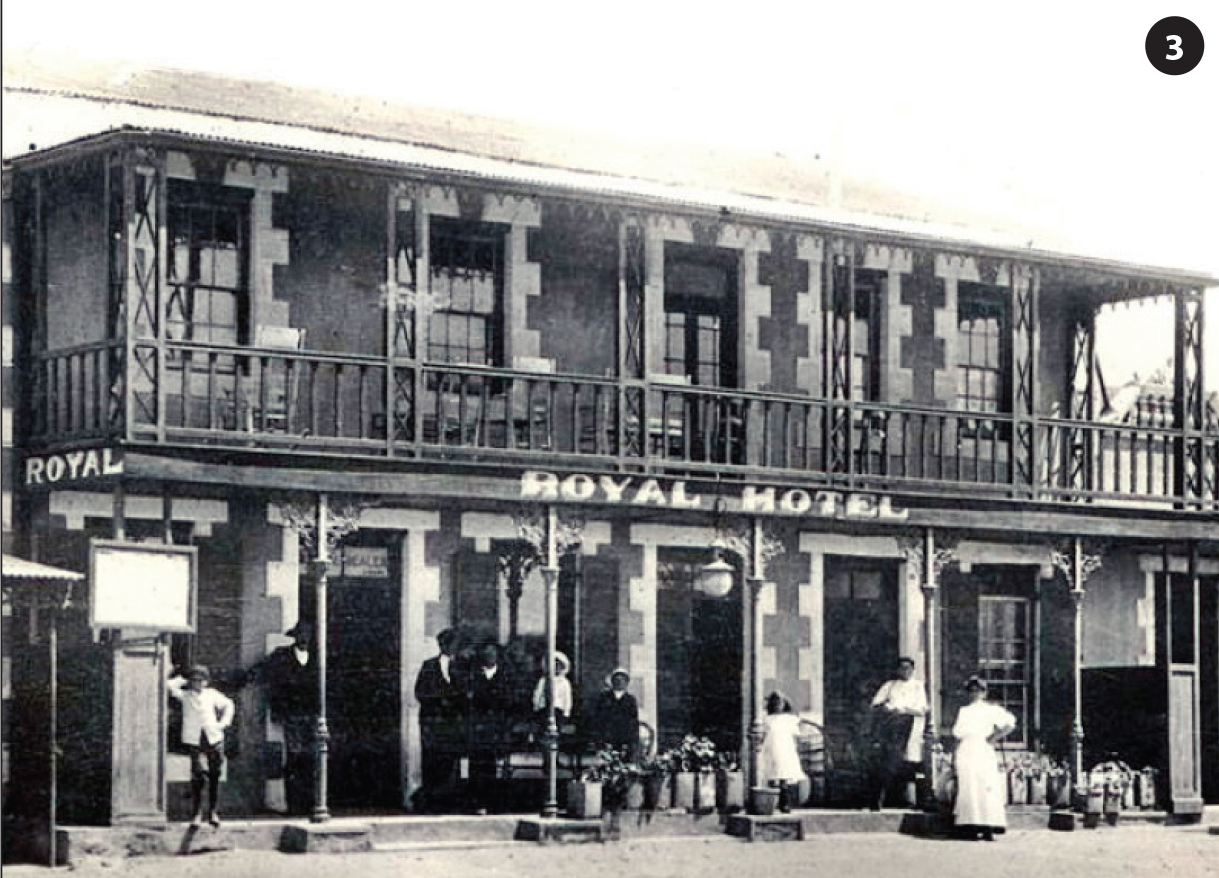
Angling and the birth of tourism in Hermanus (1900–1970)
March 5, 2020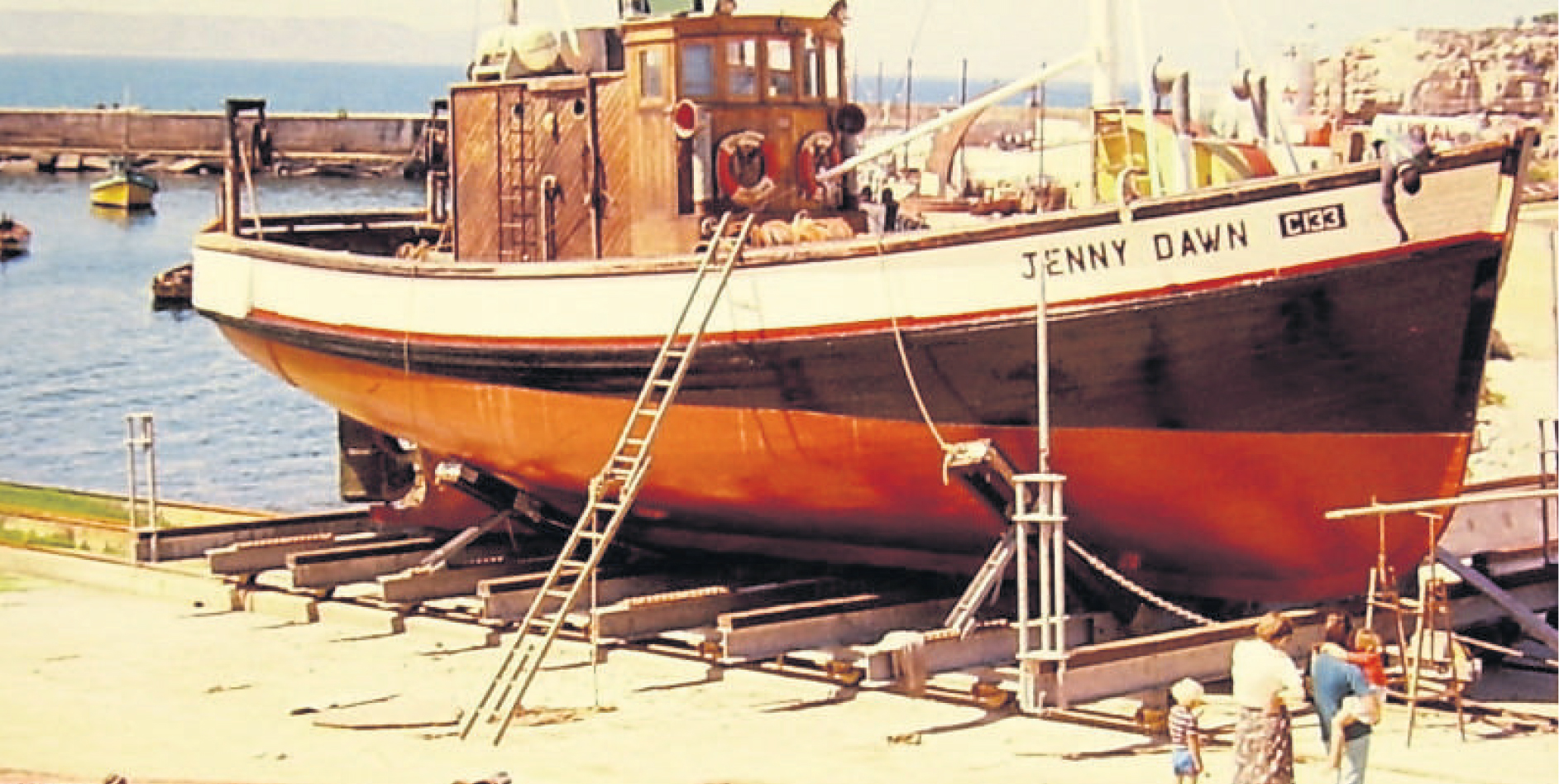
Depleted fish leave white elephant
March 9, 2020Writer: Dr Robin Lee
In 1896, two events occurred in Hermanus that began the long life of the town as a tourist destination – as it still is today.
The first event was the building of a Sanatorium in Marine Drive. Dr Hoffmann and his wife launched this initiative to provide care for patients suffering from respiratory diseases or seeking rest and recuperation in a healthy environment, such as Hermanus was known to be. In today’s terminology, they would be categorised as ‘wellness tourists’, and they make up a large part of all tourism.
The second event was a far-sighted observation by Walter MacFarlane, a first-generation descendant of a settler family. He saw a steady increase in people passing through Hermanus to do business in Stanford, Gansbaai and beyond. These trips involved at least one overnight stay, prompting McFarlane to make rooms in his own house available for rent. The positive response persuaded him to build the first hotel in Hermanus, the Victoria Hotel.
Hotels became the economic driver of development in Hermanus until the 1990s and still remain critical to the economy of the town. Many hotels followed the Victoria, and came on stream in roughly this order: Victoria Hotel (1896 – later Astoria); Central (1899 – also known as Neilson’s); Masonic and Regent’s Palace; Royal (1900); Marine (1902); Riviera (1904); Bay View (1921) Windsor (1930); Esplanade (1933); Cliff Lodge (1939); Ocean View (1940s); Birkenhead (1952). There were also the Stemmet Private Hotel, Windsor Lodge Hotel and Seahurst Hotel, for which I do not have firm opening dates.
Hotels boost a local economy in several ways. The hotel owner (or developer) invests capital in the town and creates jobs during the construction period. Permanent jobs of a low-skill nature are created by employment in the hotel. Tourists pay for their accommodation and spend more money in shops in the town. Tourists usually are better off than the locals, which encourages local shops to stock more expensive items, which then become available to local shoppers as well. Most tourists do not endanger the natural environment and are ‘smoke-free’ users of the areas, as distinct from mining or manufacturing development.
But, there are certain potential negatives to tourism-led development. Success depends on ideas about fashion preferences, and hotels can rapidly lose markets if some other destination becomes more fashionable. Local unrest or political trouble of any kind deters tourists, as do negative attitudes to tourists shown by the local population. In the 20th century, Hermanus was not affected by such events but has suffered from political protest in the 21st century.
Historically, Hermanus has had several unplanned boosts to its hotel economy just as difficulties were being experienced in the hotel business as a result of the Depression. World War II saw many thousands of Allied troops flooding the town on leave, with occupancy of hotels regularly exceeding 100%. The Marine permanently made available five ‘beds’ under the billiard table for latecomers. And, in the 1990s, as angling declined, the southern right whales returned and Hermanus became the top land-based whale watching town in the world, with distinct benefits to the hotel industry.
Hermanus has also had an advantage arising from the hundreds of ‘holiday homes’ built in the town. This is combined with what is called the ‘visiting friends and relatives’ (VFR) form of tourism when owners of holiday homes have members of the extended family on visits. The first holiday home was built by Hendrik Cloete near the mouth of the Kleinivier, in 1794.
Since then, the number of holiday homes has continued to increase. Early holiday homes were built near the village of Hermanuspietersfontein, and took off in Voëlklip in the 1920s. During that decade, a building construction family named Moore built dozens of cottages in the fishermen’s style for families that visited once or twice a year.
Large-scale development of holiday homes has several impacts on the local economy. Capital is invested in the building; jobs are created for low-skilled construction workers; local materials are bought; the owners pay ‘rates and taxes’ to the local authority; during holidays at the family home, tourists spend in local retail outlets. Recent research has shown that holiday homeowners spend up to R7 000 during two weeks they are in residence, compared to R1000 spent during the same time by conventional tourists.
The interests of tourists have changed over time, but Hermanus has been able to find ways to meet new demands. My analysis of tourism activities reveals six types of tourism over the 165 years of Hermanus history:
- From the 1890s to 1930s and 2000 to 2020 – wellness and medical tourism: This class of tourists was generally well-off , and their spending had a positive effect on the local economy, disproportionate to their numbers. A similar, but smaller version of this kind of tourism emerged in the early 21st century, with the opening of the Mediclinic and the Oncology Centre and the availability of medical specialists.
- From 1900 to date – tourists seeking a physically active holiday: For these tourists, fishing, golf, bowls, sailing, hiking, mountain biking and other physical activities are paramount. Hermanus has produced a large number of clubs and societies, such as the Hermanus Golf Club, Bowling Club and Angling Club, and invested in facilities to satisfy this class of holidaymaker. Today, adventure activities include shark cage diving, mountain biking, paragliding, kitesurfing and ‘extreme sports’.
- From the early 1900s to date – those seeking a ‘back-to-nature’ holiday: This group enjoys camping in a decent camping ground, cooking for themselves over an open fi re, and generally being ‘outdoorsy’. Hermanus has not been so successful in catering to this group, and even the De Mond Caravan Park closed some years ago. Onrus does provide for these tourists, but the absence of these facilities in Hermanus is a gap in the Overstrand tourism strategy.
- From the 1920s to date – wealthy people seeking complete leisure, preferably pampered, in classy surroundings, socialising with people of a similar upper class and willing to pay more for this: Most of this group stayed at one of the thirteen hotels operating in the period 1920 to 1960 when this class of holidaymaker flocked to Hermanus. Unfortunately, there are few statistics available, except for The Marine Hotel, which hosted guests ranging from British and European royalty and aristocracy to wealthy businesspeople, politicians and artists.
- From the 1940s to date – families seeking an aff ordable holiday: Renting a holiday house or rooms in a home, close to the famous bathing beaches for children. There are records of families taking such holidays as early as 1902 when it took two days to get to Hermanus from Cape Town. Mr Sidney Gearing (after his retirement, Mayor of Hermanus) took this journey annually to his large family home in Marine Drive, regularly renting a house known as The Anchorage.
- From the 1920s to date – travellers seeking an environmental experience, with the emphasis first on ‘wildflower’ (fynbos) viewing, and then extending to hiking in nature and whale watching. In modern terms, these are known as eco-tourists. Most analysts agree that this group is the wave of the future as they have so many positive impacts on the host locality, and generally very few negative impacts. Members of this group are usually older, more affluent and more aware of the damage they might cause to their surroundings. Often, they arrive in organised groups and are more likely to tell friends about their experience, thereby sustaining the fl ow of holidaymakers.
In conclusion, the tourist economy sustained the town for at least six decades during the 20th century and is still the primary source of revenue now.
Tourists have boosted the town’s wealth, but have created a skewed economy, heavily weighted towards a service economy rather than a productive one.
1. Visitors playing golf in front of the Bay View Hotel.
2. The Riviera Hotel, circa 1910.
3. The Onrus Hotel, 1945.
4. A second storey was added to the Riviera Hotel in 1918 and next to it was the first bowling green in Hermanus.
PHOTOS: Old Harbour Museum

